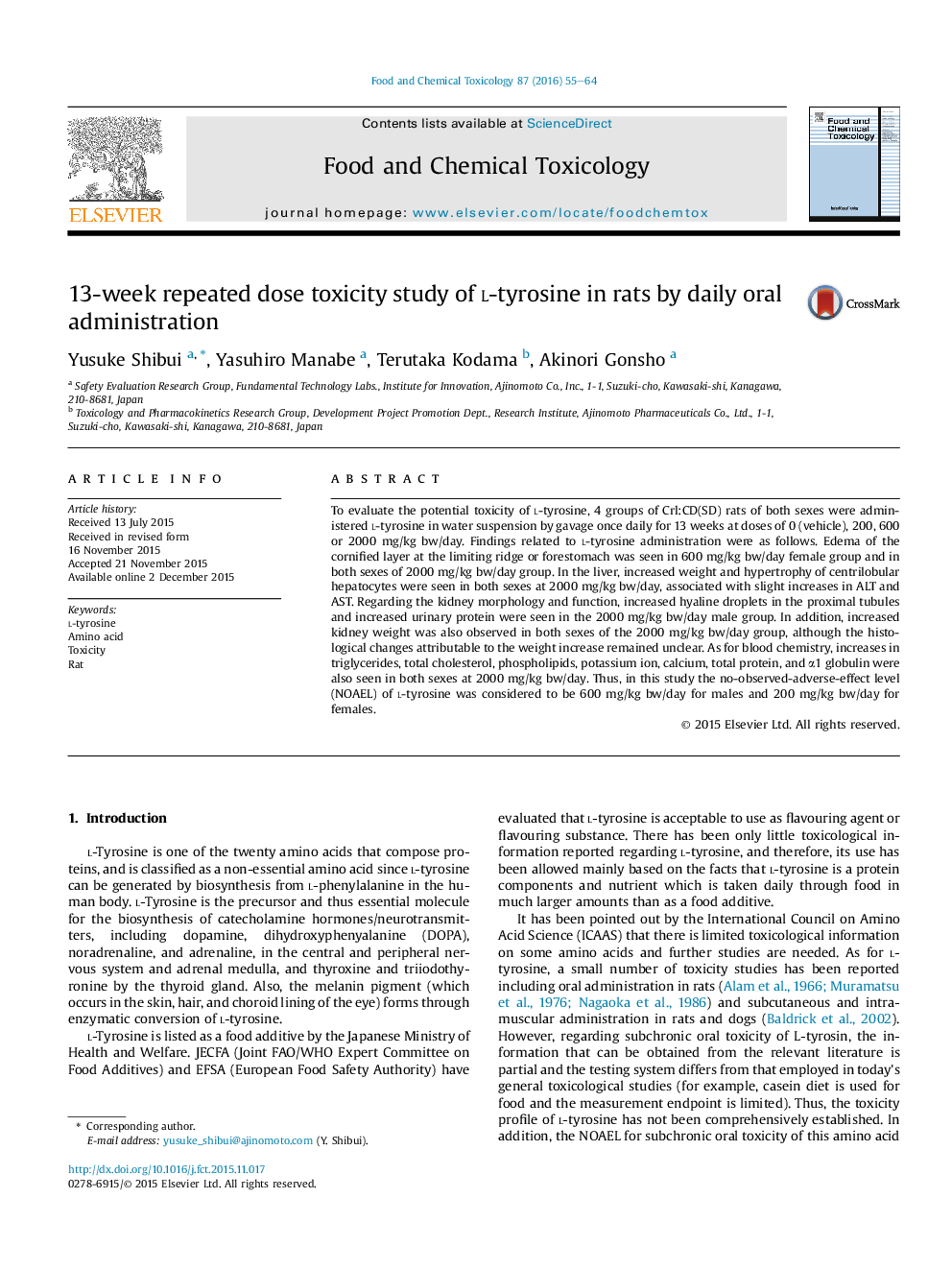| Article ID | Journal | Published Year | Pages | File Type |
|---|---|---|---|---|
| 5849649 | Food and Chemical Toxicology | 2016 | 10 Pages |
â¢We investigated the subchronic toxicity of l-tyrosine in rats.â¢l-tyrosine-related changes were observed in liver, stomach and kidney.â¢The NOAEL was 600 mg/kg/day for males and 200 mg/kg/day for females.â¢This study was not conducted under GLP.â¢Concentration, homogeneity and stability of l-tyrosine suspensions were confirmed.
To evaluate the potential toxicity of l-tyrosine, 4 groups of Crl:CD(SD) rats of both sexes were administered l-tyrosine in water suspension by gavage once daily for 13 weeks at doses of 0 (vehicle), 200, 600 or 2000 mg/kg bw/day. Findings related to l-tyrosine administration were as follows. Edema of the cornified layer at the limiting ridge or forestomach was seen in 600 mg/kg bw/day female group and in both sexes of 2000 mg/kg bw/day group. In the liver, increased weight and hypertrophy of centrilobular hepatocytes were seen in both sexes at 2000 mg/kg bw/day, associated with slight increases in ALT and AST. Regarding the kidney morphology and function, increased hyaline droplets in the proximal tubules and increased urinary protein were seen in the 2000 mg/kg bw/day male group. In addition, increased kidney weight was also observed in both sexes of the 2000 mg/kg bw/day group, although the histological changes attributable to the weight increase remained unclear. As for blood chemistry, increases in triglycerides, total cholesterol, phospholipids, potassium ion, calcium, total protein, and α1 globulin were also seen in both sexes at 2000 mg/kg bw/day. Thus, in this study the no-observed-adverse-effect level (NOAEL) of l-tyrosine was considered to be 600 mg/kg bw/day for males and 200 mg/kg bw/day for females.
